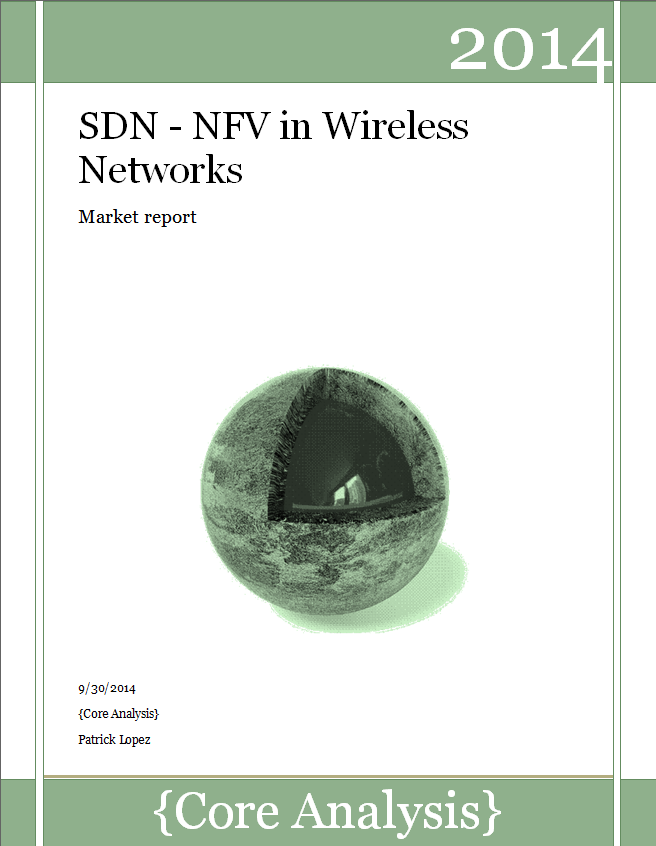
This Post is extracted from my report published October 1, 2014.
Cloud and
Software Defined Networking have been technologies explored successively in
academia, IT and enterprise since 2011 and the creation of the Open Networking
Foundation.
They were mostly subjects of interest relegated to science projects
in wireless networks until, in the fall of 2013, a collective of 13 mobile
network operators co-authored a white paper on Network Functions
Virtualization. This white paper became a manifesto and catalyst for the wireless
community and was seminal to the creation of the eponymous ETSI Industry
Standardization Group.
Almost simultaneously, AT&T announced the creation
of a new network architectural vision – Domain 2.0, heavily relying on SDN and
NFV as building blocks for its next generation mobile network.
Today, SDN
and NFV are hot topics in the industry and many companies have started to
position themselves with announcements, trials, products and solutions.
This report is the result of hundreds of
interviews, briefings and meetings with many operators and vendors active in
this field. In the process, I have attended, participated, chaired various
events such as OpenStack, ETSI NFV ISG, SDN & OpenFlow World Congress and
became a member at ETSI, OpenStack and TM Forum.
The Open
Network Foundation, the Linux Foundation, OpenStack, the OpenDaylight project,
IEEE, ETSI, the TM Forum are just a few of the organizations who are involved in
the definition, standardization or facilitation of cloud, SDN and NFV. This
report provides a view on the different organizations contribution and their
progress to date.
Unfortunately,
there is no such thing as SDN-NFV today. These are technologies that have
overlaps and similarities but stand apart widely. Software Defined Network is about
managing network resources. It is an abstraction that allows the definition and
management of IP networks in a new fashion. It separates data from control
plane and allows network resources to be orchestrated and used across
applications independently of their physical location. SDN exhibits a level of
maturity through a variety of contributions to its leading open-source contribution
community, OpenStack. In its ninth release, the architectural framework is well
suited for abstracting cloud resources, but is dominated by enterprise and
general IT interests, with little in term of focus and applicability for
wireless networks.
Network
Function Virtualization is about managing services. It allows the breaking down
and instantiation of software elements into virtualized entities that can be
invoked, assembled, linked and managed to create dynamic services. NFV, by
contrast, through its ETSI standardization group is focused exclusively on
wireless networks but, in the process to release its first standard is still
very incomplete in its architecture, interfaces and implementation.
SDN can or
not comprise NFV elements and NFV can or not be governed or architected using
SDN. Many of the Proof of Concepts (PoC) examined in this document are
attempting to map SDN architecture and NFV functions in the hope to bridge the
gap. Both frameworks can be complementary, but they are both suffering from
growing pains and a diverging set of objectives.
The intent is
to paint a picture of the state of SDN and NFV implementations in mobile
networks. This report describes what has been trialed, deployed in labs,
deployed commercially, what are the elements that are likely to be virtualized
first, what are the timeframes, what are the strategies and the main players.

No comments:
Post a Comment
Hello, thanks for your comment. Comments are moderated please allow a few days for them to appear.